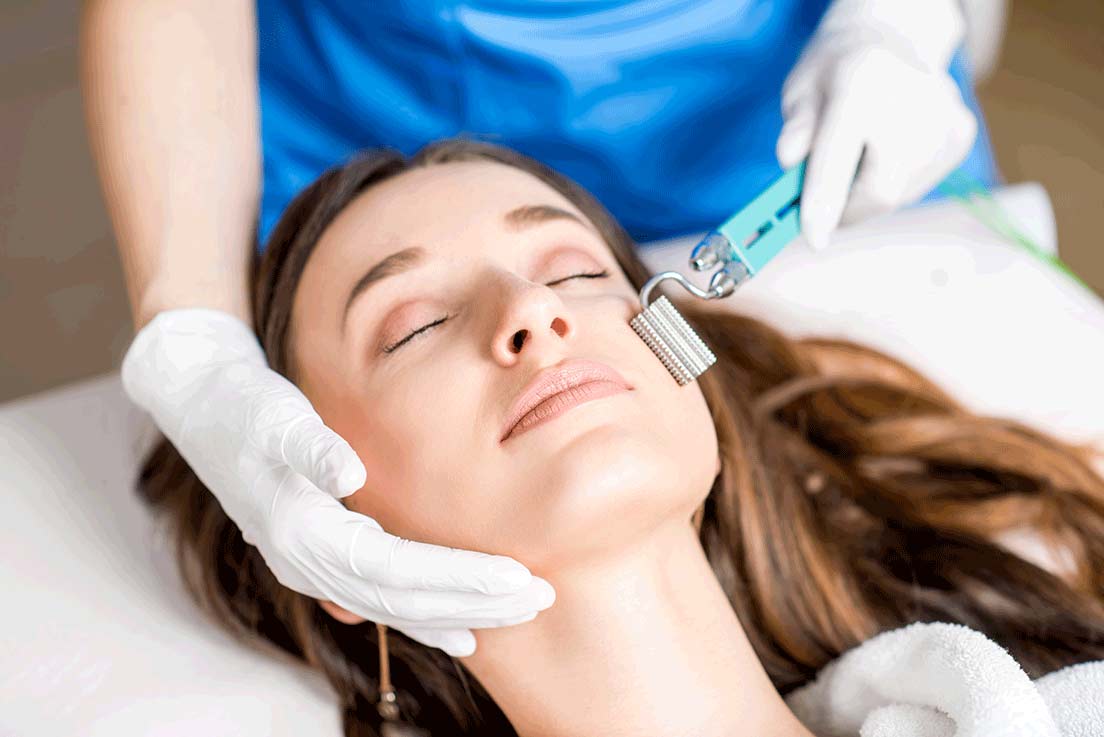Microneedling w/ PRP
PRP Microneedling


Purpose and Background
Platelet Rich Plasma Therapy (PRP) has been used for a number of years in orthopedics and sports medicine, to treat muscle and ligament injuries, pain problems, and skin lesions. Due to the success of PRP in medicine, the procedure was then developed into an anti-aging treatment designed to induce new collagen production, reduce wrinkles, and diminish the visible signs of aging by growing new healthy tissue. PRP is considered to be a safe, natural treatment because, rather than using a synthetic substance, it uses cells and growth factors from your own blood to slow and even reverse the aging process for a more youthful and radiant appearance. Collagen is what gives skin a firm, youthful appearance. As we age, less collagen is produced, causing sagging, wrinkles and soft tissue depressions in the skin. Once applied topically onto the surface of the skin and infused in through microneedling technique (PRP facial), PRP therapy counteracts aging by stimulating new collagen production in the exact areas of concern where we want the skin to repair and rejuvenate itself. PRP can be used on the face, neck, décolletage, and hands. The number of treatments needed varies per patient. We recommend 1-3 treatments administered at four-week intervals until the desired result is achieved, followed by 1-2 maintenance treatments per year. While some result is visible immediately at the time of treatment, there is usually a return to baseline in 3-5 days as the PRP is absorbed back into the body prior to the complete action of the cellular regenerative process. Most patients see improvement for up to 12 weeks with results lasting up to 2 years
Procedure
Approximately 20cc of blood are drawn from the patient in the same way blood samples are taken for routine lab tests. The tubes of blood are put into a centrifuge, where the blood is spun in order to separate the red blood cells from the PRP. Once injected under the skin or applied topically onto the skin, the PRP releases growth factors and activates multi-potent stem cells to generate new, younger tissue. This new tissue synthesis includes new collagen for firmness and elasticity, new fatty tissue for plumpness and smoothness, and new blood vessels for a healthy rosy glow.
Alternatives
PRP Therapy is strictly a voluntary cosmetic procedure; no treatment is necessary or required. Alternative treatments may include, but are not limited to: facial creams, BOTOX Cosmetic, dermal fillers, chemical peels, laser resurfacing, cosmetic surgery, or no treatment.
K. Pregnancy (female patients only):
Even though there is no evidence of complications, we will not perform this treatment if you are pregnant.
Discomfort & Risks
The injection and/or topical application of PRP is very safe because cells from the patient’s own blood are used, which means there are no preservatives and no chance of the body rejecting the cells. The primary risks and discomforts are related to the blood draw where there is a slight pinch to insert the needle for collection and there is a potential for bruising at the site. Smokers have less positive response to this treatment than non-smokers, since the toxins in cigarette smoke block the response of the stem cells. Understanding that additional treatment side effects are generally temporary, related to PRP injections, and can include but are not limited to:
A. Needle marks- Visible needle marks occur normally and resolve in a few days.
B. Swelling – An ice pack may be placed over the area until swelling subsides.
C. Itching – Temporary and generally intermittent.
D. Bruising – Bruising is always a possibility with any skin injection and may develop immediately or up to 24 hours following treatment. To reduce the risk of bruising, avoid aspirin, anti-inflammatory medications, and herbal supplements, including vitamins, for one week prior to and after your treatment. If you experience bruising, it will generally heal within 7-14 days and may be covered with makeup if desired.
E. Pain/Tenderness – May last up to 2 weeks. Tylenol may be taken to reduce discomfort if desired.
F. Lumps/Bumps – Will generally subside/diffuse within approximately 2 weeks after treatment.
G. Migration of PRP – PRP may migrate from its original injection site and produce fullness in adjacent areas.
H. Asymmetry – The human face is normally asymmetrical in its appearance and anatomy. There can be variation from one side of the face to the other in terms of the response to PRP and it may not be possible to achieve or maintain exact symmetry with PRP injections.
I. Infection – Infections are extremely rare but may require treatment including antibiotics if necessary.
J. Skin necrosis- It is very unusual to experience death of skin and deeper soft tissues after injections.
K. Unsatisfactory result – Some patients may have an unsatisfactory result that includes: temporary visible irregularities, prolonged bruising, swelling, tenderness, and/or disappointment in the result.
